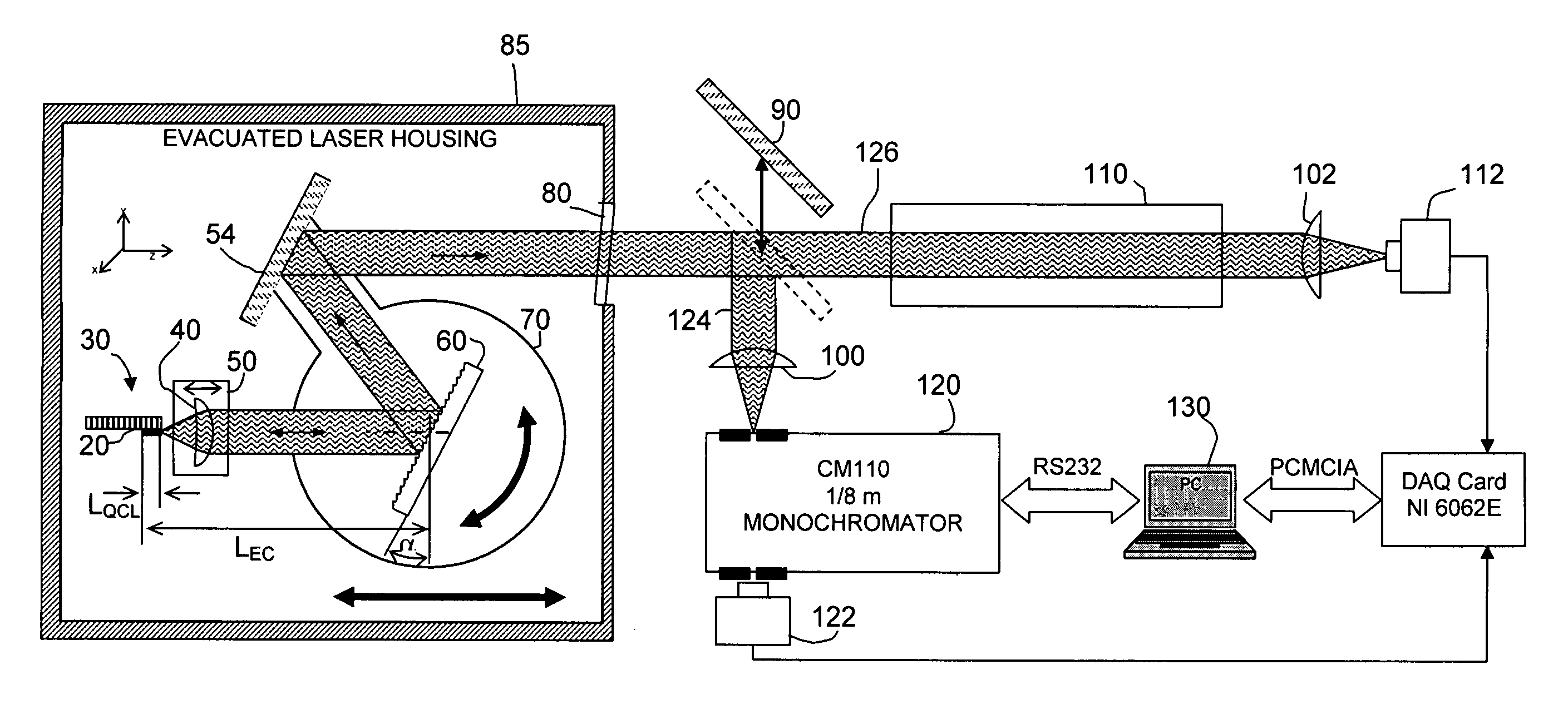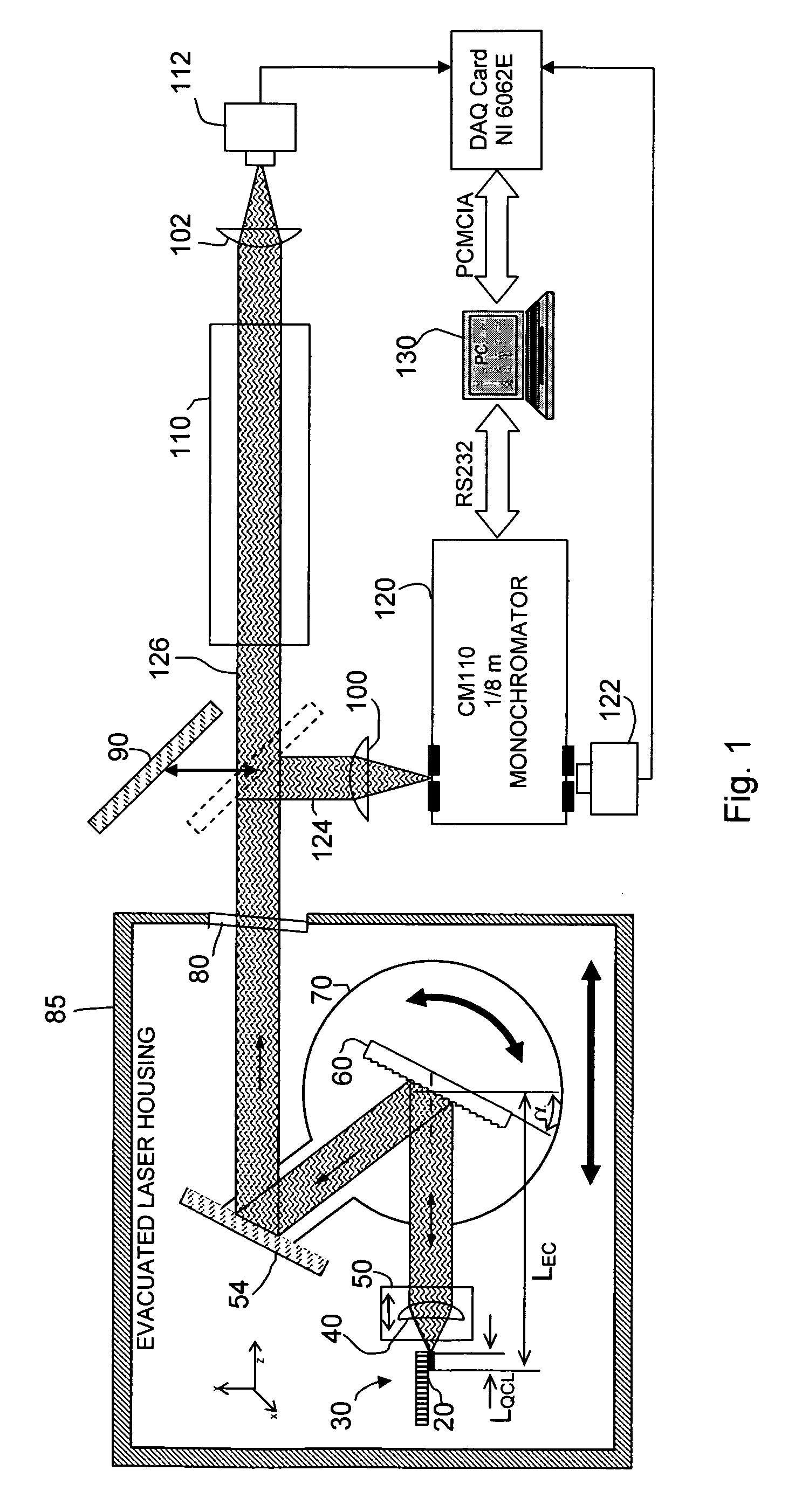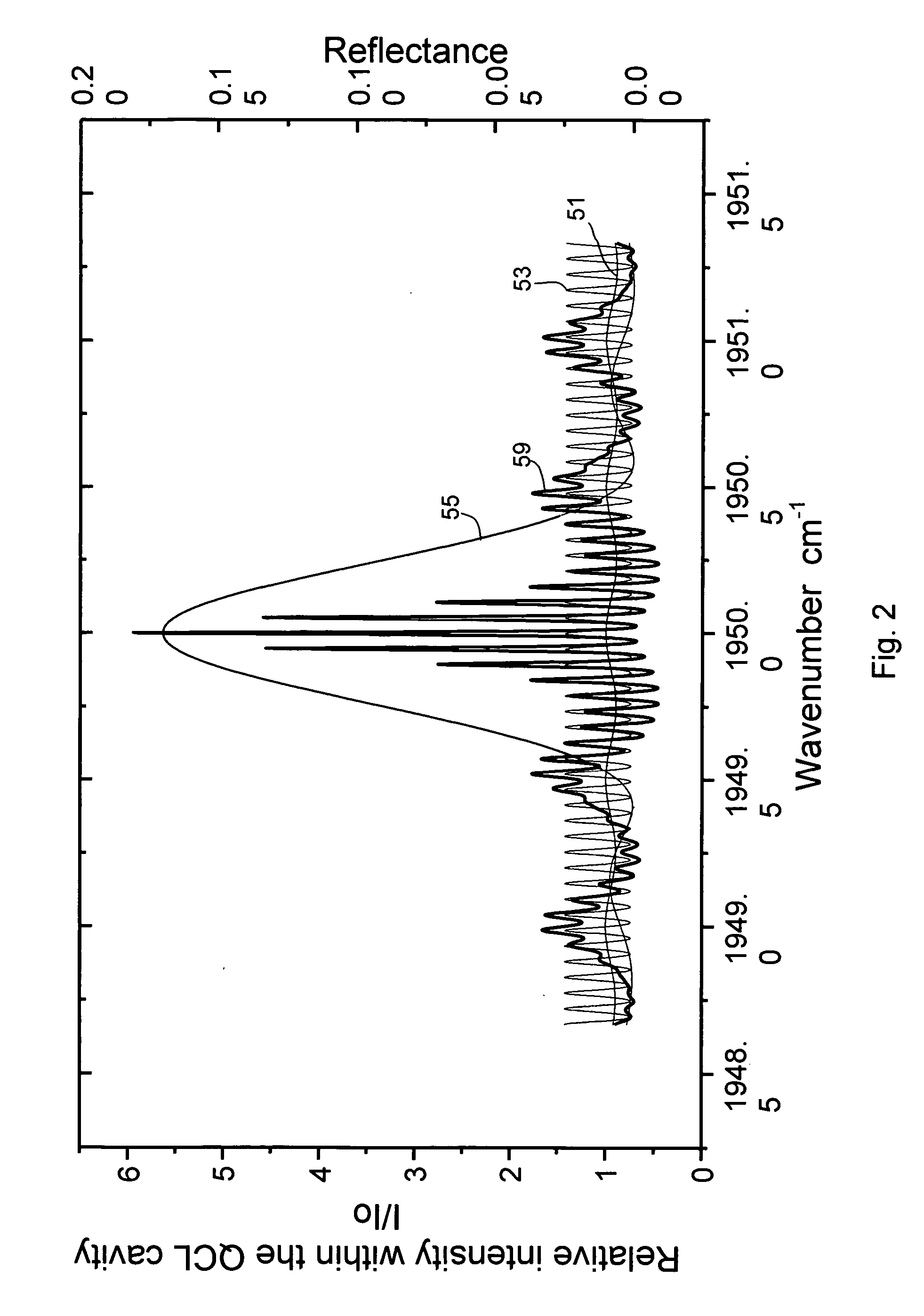Piezo activated mode tracking system for widely tunable mode-hop-free external cavity mid-IR semiconductor lasers
a technology of mode-hop-free external cavity and tracking system, which is applied in the field of laser spectroscopy, can solve the problems of limited laser spectroscopy use, high performance and reliability, and limited wavelength tuning range of laser radiation emitted
- Summary
- Abstract
- Description
- Claims
- Application Information
AI Technical Summary
Benefits of technology
Problems solved by technology
Method used
Image
Examples
Embodiment Construction
[0026] Referring initially to FIG. 1, a preferred embodiment of a system 10 incorporating the principles of the present invention may include a quantum cascade laser 20, a thermoelectric cooler 30, a collimating lens 40, a motorized 3D translation stage 50, a diffraction grating 60, a mirror 54, a movable platform 70 (sometimes referred to herein as a “rotary stage”), a window 80, a movable mirror 90, lenses 100, 102, a reference cell 110, a first photodetector 112, a monochromator 120, a second photodetector 122, and a microprocessor 130 with data acquisition electronics coupled to the first and second photodetectors 112, 122. While the system illustrated in FIG. 1 does not include a sample cell, one skilled in the art will recognize that either reference cell 110 or monochromator 120 may be replaced with a sample cell. Alternatively, an additional “arm” of the laser path could be formed using a beam splitter or mirror, and used for sample measurement.
[0027] Laser 20 prefe...
PUM
 Login to View More
Login to View More Abstract
Description
Claims
Application Information
 Login to View More
Login to View More - R&D
- Intellectual Property
- Life Sciences
- Materials
- Tech Scout
- Unparalleled Data Quality
- Higher Quality Content
- 60% Fewer Hallucinations
Browse by: Latest US Patents, China's latest patents, Technical Efficacy Thesaurus, Application Domain, Technology Topic, Popular Technical Reports.
© 2025 PatSnap. All rights reserved.Legal|Privacy policy|Modern Slavery Act Transparency Statement|Sitemap|About US| Contact US: help@patsnap.com



